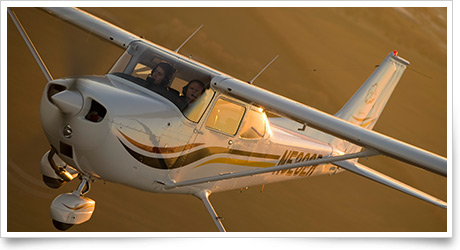| The following stories from the Jan. 06, 2012, edition of AOPA ePilot were provided to AOPA members who expressed an interest in the particular subject areas. Any AOPA member can receive information tailored to their areas of interest by updating their preferences online. |
training tipsThe fifth level You can see it when a professional pilot, reminiscing about his early days in a general aviation trainer, expresses gratitude for how his first instructor imparted crosswind-landing skills, delivered key pointers about aircraft performance or aerodynamics, or made tackling tough tasks a treat. Inspiration shines through when a newly certificated flight instructor reflects on the understanding she acquired about a tricky commercial-pilot maneuver, and the tips she received from an experienced colleague about how to get a stressed-out student pilot to release that death grip on the controls. Flight training covers an extraordinary volume of information. But it’s the inspiration we remember best and talk about most when someone wants to know what drew us to aviation—and whether it kept its initial promise. With inspiration comes motivation—and a new year provides a natural opportunity to assess your training, itemize issues in need of attention, and recapture any slowed momentum toward your goal. Obviously, your flight instructor is a big part of this assessment, and much advice can be found on how to evaluate the health of your student-instructor dynamic. Here’s a basic checklist for making that evaluation: Will you remember your CFI for the inspiration and insights you gained? Or will the recollections be marked by canceled lessons, showboating, poor preparation, and similar disappointments? You’ve come too far to walk away—and there’s no reason why you should—so act on any concern. Have a talk. Get a second opinion. Take a phase check. Change to a more suitable aircraft. The remedies are many, and they work. So, here’s a tougher question: Are you holding up your end of the bargain? Answer yes if you prepare with sincerity for lessons, hit the books for ground school or self-study, can accept honest critique without taking offense, and do your part to move the program forward. Instructors have great power to inspire students. Would it surprise you to read that inspiration is a two-way street? Many students, by their enthusiasm, their focus, and their perseverance, remind flight instructors how inspiring their chosen profession can be. Keep the tradition going in 2012! training productsNoral flight bags at PilotMall.comPilotMall.com now offers the Noral line of pilot flight bags. Prices range from $35 for the Super Headset Bag to $137 for the CFI/IFR Pilot Flight Bag. See the website for more information; call 800/249-5730 for telephone orders.
Note: Products listed have not been evaluated by ePilot editors unless otherwise noted. AOPA assumes no responsibility for products or services listed or for claims or actions by manufacturers or vendors. final examQuestion: I am learning to fly in a Piper Cherokee Six. My instructor has mentioned the term “maximum zero fuel weight” a couple of times, although we have not really discussed it yet. Can you shed some light on the subject?
Answer: Some aircraft have a limit on how much they can weigh prior to adding any usable fuel or oil. That maximum weight limit is referred to as the “maximum zero fuel weight.” It includes the total weight after adding the basic empty weight of the aircraft plus passengers and cargo. The exact number can be found in the aircraft type certificate data sheet or the aircraft flight manual. Once fuel is added, the total weight will need to be calculated in order to confirm that the maximum takeoff weight is not exceeded. Read more in this article from AOPA Pilot.
Got a question for our technical services staff? E-mail [email protected] or call the Pilot Information Center, 800/872-2672. Don’t forget the online archive of “Final Exam” questions and answers, searchable by keyword or topic. |
 It’s said that a student pilot moves through
It’s said that a student pilot moves through 

